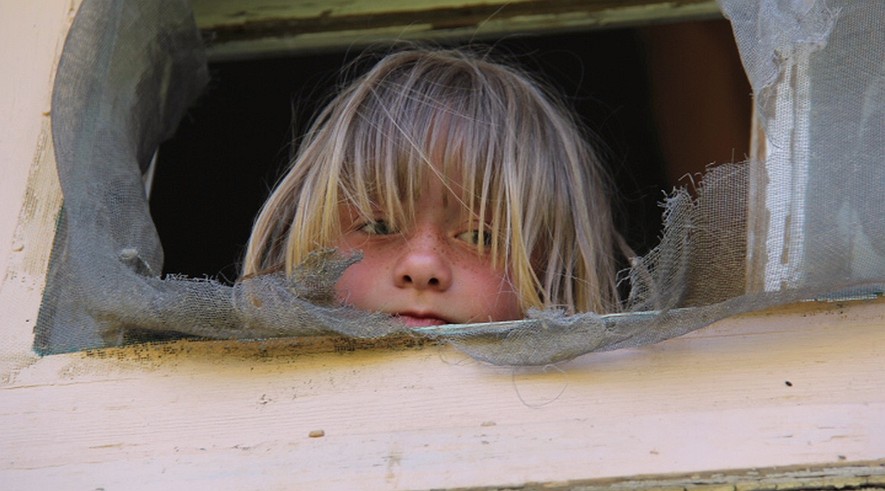Sleeping under a roof, but
homeless nevertheless
By Addie Moorfoot
03.05.13
Ten-year-old Kaylie Hegwood and her brother Tyler, 12, are hungry – very hungry. Not because they just finished a game of soccer or forgot to eat breakfast. Kaylie and Tyler are hungry because their mother cannot afford three meals a day.
“There’s good days and bad days,” Tyler told Jezza Neumann, director of “Poor Kids,” a documentary that aired on PBS. “Sometimes when we have cereal, we don’t have milk. We have to eat it dry. Sometimes we don’t have cereal and we have milk. It’s often, like, switch and swap. Sometimes, like, when I switch the channel and there’s a cooking show on, I get a little more hungry and I want to vanish into the screen and start eating the food.”
Kaylie and Tyler live in Iowa with their mother Barbara. Even though Barbara has a job, she barely has enough money for groceries after she pays the rent. Kaylie and Tyler help their mother by collecting empty cans to recycle. Tyler also mows lawns.
The siblings are not enrolled in school because they do not have a permanent home. They move too frequently to register at a school. Currently they are living in a small motel room, which makes them officially homeless.
Who Are The Homeless?
People think of the homeless as poorly dressed adults who sit on the street begging for money. But this is not always the case. Innocent children are also victims of homelessness.
Poverty means having little or no money and it often leads to homelessness. About 16 million children in the United States live in poverty. An estimated one in every 45 children in the country is homeless. That is more than 1.6 million children living in America who do not have a place to call home. Instead they live on the street, a shelter or in a motel. That is like the entire population of Idaho not having a home.
This staggering figure is why in March 2011 some members of Congress hosted a meeting on family homelessness called “A Growing Epidemic: Homeless Children, Youth and Families.” An epidemic describes something that is growing or spreading rapidly, usually in a bad way.
No Pocket Money To Spare
“A lot of times, I have to give my money up to buy groceries and buy gas for the car and lawn mower for mowing other people’s lawns,” Tyler tells Neumann. “I got $10, and I put in $6 of it for the gas and gave the rest to my mom for some food. And (that’s) kind of what I do with my money.”
Kaylie and Tyler are not alone in their struggle to help their mother make enough money to survive. According to national studies, millions of Americans pay more than 50 percent of their income on rent and utility bills such as electricity, water and telephone service.
Kaylie’s mother earns $1,480 a month. Her total in bills each month come to $1,326. That leaves her with just $154 to spend on gas for the car and food for herself and her two children each month. A missed paycheck, car trouble, or an illness can turn into a crisis that forces a family to give up its home, just like Kaylie and Tyler.
Childhood Is Critical
The more time children like Kaylie and Tyler live in poverty, the harder it will be for them to not be poor as adults. That is chiefly because children in poverty and homelessness have a hard time attending school. Instead they work to help their parents pay the bills.
According to a study by Columbia University, 45 percent of people who spent at least half of their childhood in poverty were poor at age 35. For those who spent less than half of their childhood in poverty, just eight percent were poor at age 35.
Studies say homeless children are twice as likely as non-homeless kids to experience anxiety as well as depression. Studies also show that one in six homeless kids will develop emotional problems and 25 percent will witness violence.
Article Source: https://newsela.com/articles/homeless-kids/id/27/
 In the United States during 1992, any family of four with an annual cash income of less than $14,335 (before taxes) was considered poor. The dollar amount was called the poverty line, an economic measuring rod devised in 1964. The line was set at three times the amount needed to provide the cheapest nutritionally balanced diet. The poverty line is adjusted annually for inflation.
In the United States during 1992, any family of four with an annual cash income of less than $14,335 (before taxes) was considered poor. The dollar amount was called the poverty line, an economic measuring rod devised in 1964. The line was set at three times the amount needed to provide the cheapest nutritionally balanced diet. The poverty line is adjusted annually for inflation.
